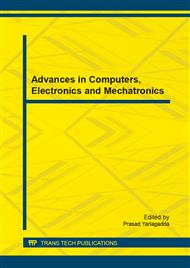p.7
p.11
p.16
p.22
p.26
p.32
p.36
p.41
p.50
The Research and Application of Intimacy in Microblog
Abstract:
This article introduces the concepts of intimacy in psychology into the micro-blog for modeling the relations and recommending the close friends. Inspired by psychology, we measure the degree of intimacy between users in micro-blog through five factors: common friends, common concerns, frequency of forwarding information, frequency of sending message between users and user’s location. In the recommendation stage, we first determine the users whose value of intimacy with the target user are higher than others as the close friends, and then recommend the close friends with the same treatment to the target. In the experiment, we use the proposed intimacy relationship model to analyze the user data and information in Sina Weibo. Experimental results show that our method can obtain accurate users’ relations same as the distribution of real-world, and can make humane user recommendation similar to mutual referrals in real-world for the target.
Info:
Periodical:
Pages:
26-31
Citation:
Online since:
October 2014
Authors:
Keywords:
Price:
Сopyright:
© 2014 Trans Tech Publications Ltd. All Rights Reserved
Share:
Citation:


